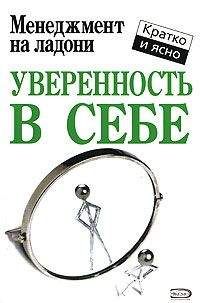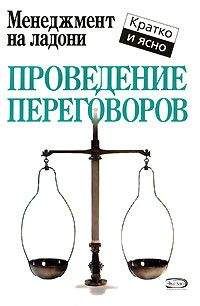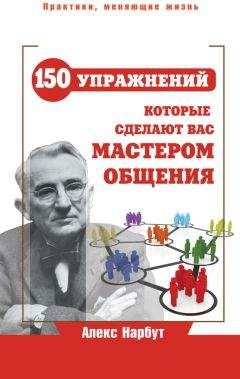Роберт Саттон - Охота за идеями. Как оторваться от конкурентов, нарушая все правила
75
Gleick. Genius.
76
Garbarini and Cullman. Strawberry Fields Forever.
77
Там же, с. 46.
78
Там же, с. 47.
79
Giuliano G. The Beatles: A Celebration (New York: St. Martin’s Press, 1986), 203.
80
Подробнее см. Cialdin, R. B., Influence: The Psychology of Persuasion, chap. 5 (New York: Quill, 1993); Williams K. Y. and C. A. O’Reilly. «Demography and Diversity in Organizations; A Review of 40 Years of Research» in Research in Organizational Behavior, vol. 20, ed. B. M. Staw and L. L. Cummings (Stamford, CT: JAI Press, 1998), 77–140; Pfeffer J. «Organizational Demography» in Research in Organizational Behavior, vol. 5, ed. L. L. Cummings and B. M. Staw (Greenwich, CT: JAI Press, 1983), 299–357; and Pfeffe, J. New Directions for Organization Theory: Problems and Prospects, chap. 4 (New York: Oxford University Press, 1997).
81
Kanter R. M. Men and Women of the Corporation (New York: Basic Books, 1977).
82
Там же, с. 48.
83
Там же.
84
Leiber R. Feat of Clay // Fast Company (April 2000): 230–44.
85
Young J. Steve Jobs: The Journey Is the Reward (New York: Scott, Foresman, 1988).
86
Young J. Steve Jobs: The Journey Is the Reward (New York: Scott, Foresman, 1988), 137.
87
Cialdini, R. B., Influence: The Psychology of Persuasion (New York: Quill, 1993), 173–74.
88
Джастин Китч (Justin Kitch), интервью Роберту Саттону и Джеффри Пфефферу 13 января 2000 г. для Homestead.com, Менло-Парк, Калифорния.
89
Данные цитаты и сопутствующие им объяснения позаимствованы из моей беседы с Дэвидом Келли, состоявшейся 22 июля 1999 г.
90
Из того же источника.
91
Данные цитаты и сопутствующие им объяснения взяты мною из нескольких бесед с Томом Келли в июле 1999 г. в офисе IDEO.
92
Meindl J. R., S. B. Ehrlich and J. M. Dukerich. The Romance of Leadership,” Administrative Science Quarterly 30 (1985): 78–102; and Meindl J. R. On Leadership: An Alternative to Conventional Wisdom // Research in Organizational Behavior, vol. 12, ed. B. M. Staw and L. L. Cummings (Greenwich, CT: JAI Press, 1990), 159–204.
93
Hiltzik, M., Dealers of Lightning (New York: HarperBusiness, 1999), 232.
94
Там же, с. 234.
95
Hiltzik, M., Dealers of Lightning (New York: HarperBusiness, 1999), 234.
96
Обзор литературы по теме надежности и обоснованности отборочных собеседований см. Arvey R. P., and J. E. Campion. The Employment Interview: A Summary and Review of Recent Research // Personal Psychology 35 (1982): 281–322; Eder R. W., and G. R. Ferris. The Employment Interview: Theory, Research, and Practice (Newbury Park, CA: Sage, 1989); Borman, W. C., M. A. Hanson and J. W. Hedge. Personnel Selection // Annual Review of Psychology 48 (1997): 299–337. В большинстве своем авторы обзоров литературы по данной теме приходят к заключению, что отборочные собеседования в той форме, в какой они обычно проводятся, не представляют большой ценности, не позволяют четко определить, хорошим или плохим работником будет интервьюируемый. И даже те немногие авторы, которые склонны считать типичное собеседование полезным инструментом отбора, признают, что он не особенно эффективен.
97
Svenson, O. Are We All Risky and More Skillful Than Our Fellow Drivers? // Acta Psychologia 47 (1981): 143–48.
98
Cringely R. X. Accidental Empires (New York: HarperBusiness, 1996), 11.
99
Charlton J. The Executive’s Quotation Book (New York: St. Martin’s Press, 1983): 74.
100
Anderson C. W. The Relation Between Speaking Times and Decision in the Employment Interview // Journal of Applied Psychology 44 (1960): 267–68.
101
См. Sternberg R. J., Wisdom: Its Nature, Origins, and Development (Cambridge, UK: Cambridge University Press, 1990); Meacham J. A. «The Loss of Wisdom» in Wisdom, 181–211; and Meacham J. A. «Wisdom and the Context of Knowledge: Knowing What One Doesn’t Know» in On the Development of Developmental Psychology, ed. D. Huhn and J. A. Meacham (Basel, Switzerland: Krager, 1983), 111–34.
102
Kotter J. P., and J. L. Heskett. Corporate Culture and Performance (New York: Free Press, 1992), 1.
103
Coyne W. «3M: Vision Is the Engine That Drives Our Enterprise» in Innovation: Breakthrough Thinking at 3M, DuPont, GE, Pfizer, and Rubbermaid, ed. R. M. Kanter, J. Kao and F. Wiersema (New York: HarperBusiness, 1997), 51.
104
См. Ash M. K. Mary Kay on People Management (New York, Warner Books, 1984); The Men’s Wearhouse: Success in a Declining Industry. Case #HR-5 (Palo Alto, CA: Graduate School of Business, Stanford University, 1997); O’Reilly III C. A., and J. Pfeffer, Hidden Value (Boston: Harvard Business School Press, 2000).
105
См. O’Reilly C. Corporations, Culture, and Commitment: Motivation and Social Control in Organizations // California Management Review 31 (1989): 24–38.
106
Chatman J. A. Matching People and Organizations: Selection and Socialization in Public Accounting Firms. Administrative Science Quarterly 36 (1991): 459–84.
107
New United Motors Manufacturing, Inc. (NUMMI), Case #HR-11 (Palo Alto, CA: Graduate School of Business, Stanford University, 1998).
108
New United Motors Manufacturing, Inc. (NUMMI), Case #HR-11 (Palo Alto, CA: Graduate School of Business, Stanford University, 1998).
109
Там же.
110
March J. G. Exploration and Exploitation in Organizational Learning. Organization Science 2 (1991): 71–87.
111
Bowen D. E., G. E. Ledford Jr., and B. R. Nathan. Hiring for the Organization, not the Job // Academy of Management Executive 5 (1991): 35–51.
112
Там же, с. 35.
113
Sitkin, S. Learning Through Failure: A Strategy of Small Loses // Research in Organizational Behavior, vol. 14, ed. B. M. Staw and L. L. Cummings (Greenwich, CT: JAI Press, 1992), 231–66.
114
Источники этих сведений: серия из 12 интервью, проведенных Стивеном Барли, Джеффри Мартином и Робертом Саттоном с сотрудниками фирмы в январе – феврале 1999 г.; архивные материалы, предоставленные нам сотрудниками корпорации; статья, опубликованная в отраслевом издании. Более полных сведений о данной корпорации предоставить не могу, поскольку интервью проводились нами при условии, что мы не будем раскрывать название корпорации.
115
Deutsch C. H. Software That Can Make a Grown Company Cry // The New York Times, November 8, 1998.
116
Pfeffer J., and G. R. Salancik. The External Control of Organizations: A Resource Dependence Perspective (New York: Harper & Row, 1978).
117
Kirkpatrick D. IBM: From Big Blue Dinosaur to E-Business Animal // Fortune, April 26, 1999.
118
Burrows P., and P. Elstrom. HP’s Carly Fiorina: The Boss // Business Week, August 2, 1999.
119
Интервью, данное Карли Фиорина в Чикаго 17 апреля 2000 г., www.hp.com/ghp/ceo/speeches/reinvent.html.
120
Стив Джобс, интервью, данное в DeAnza College’s Flint Center, Купертино, штат Калифорния, 6 мая 1998 г.
121
Blurb Buddies. Fast Company (December 1998): 54.
122
http://disney.go.com/DisneyWorld/DisneyInstitute/ProfessionalPrograms/Disney_Difference/index.html.
123
Pfeffer, J., and R. I. Sutton, The Knowing-Doing Gap: How Smart Companies Turn Knowledge into Action (Boston: Harvard Business School Press, 1999).
124
Cummings, A., and G. R. Oldham, “Enhancing Creativity: Managing Work Contexts for the High Potential Employee,” California Management Review 40 (1997): 22–38.
125
Kirton M. J. Adaptors and Innovators (London: Routledge, 1989); Kirton M. J. Adaptors and Innovators: A Description and Measure // Journal of Applied Psychology 61 (1976): 622–29; and Keller R. T. Predictors of the Performance of Project Groups in R&D Organizations // Academy of Management Journal 29 (1986): 715–26.




